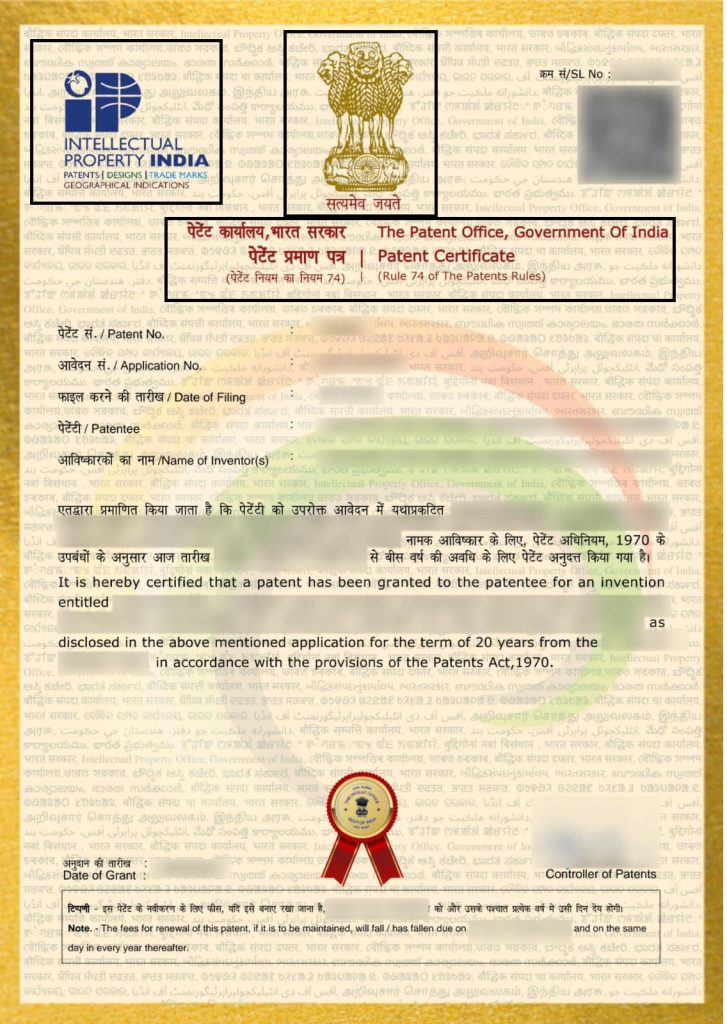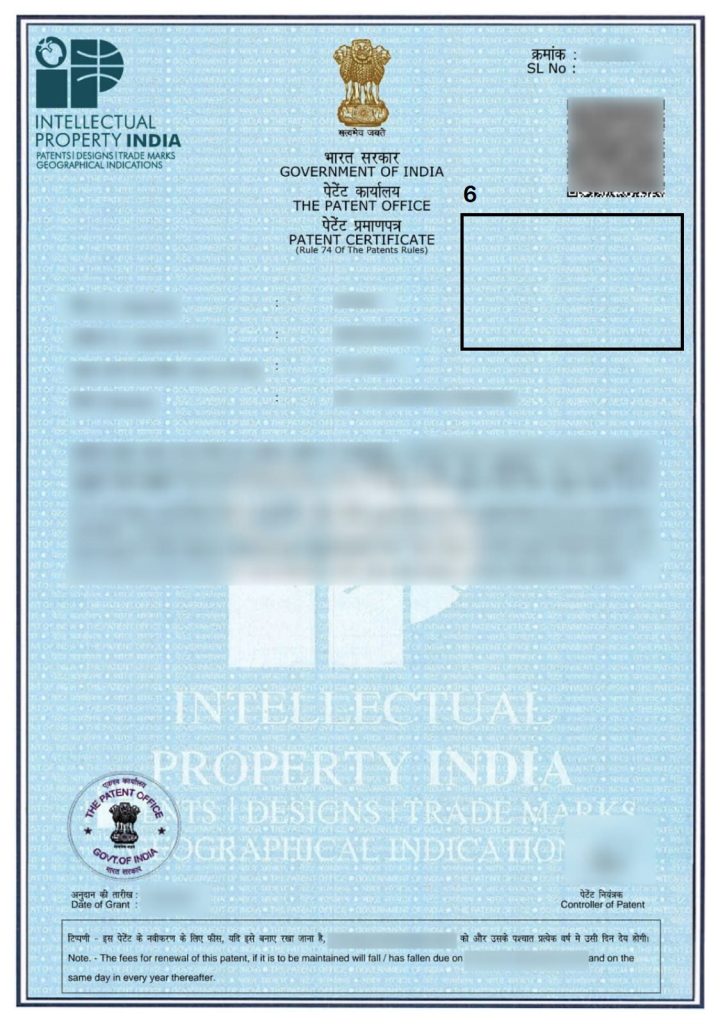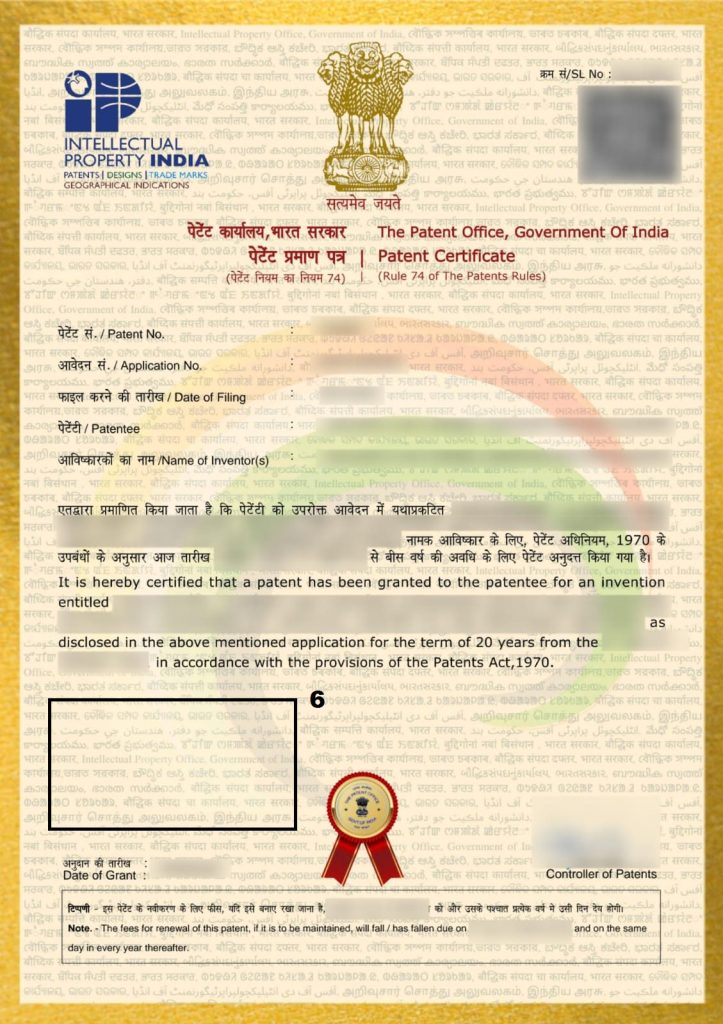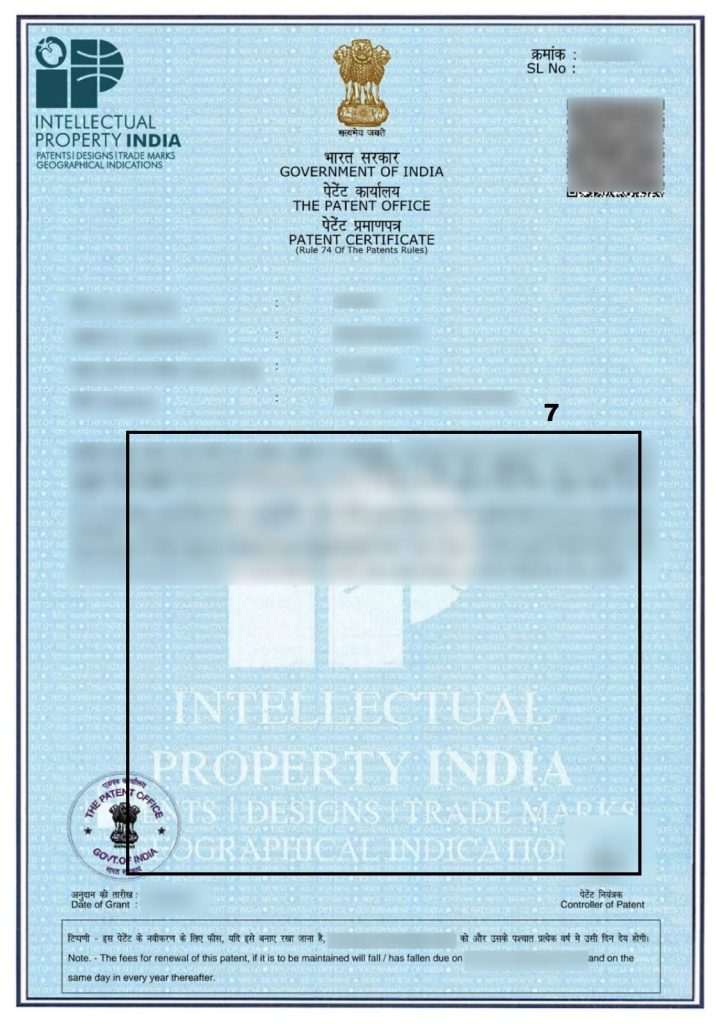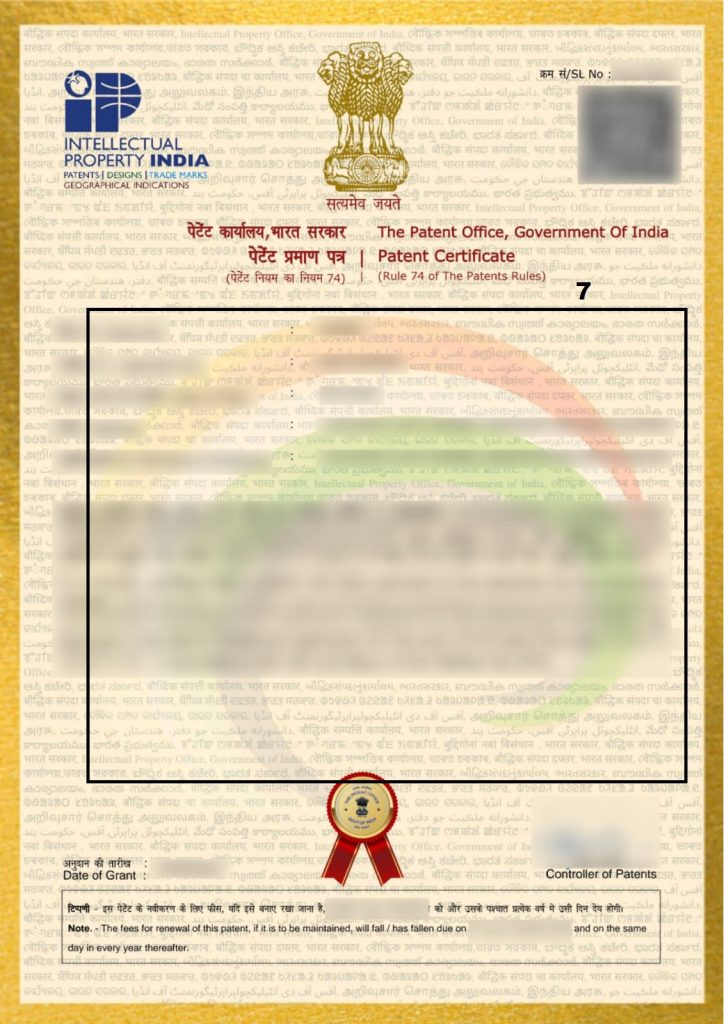ETYMOLOGY OF PATENT IN INDIA
The Act VI of 1856 was the first piece of patent-related legislation in India. This legislation’s goal was to promote the development of innovative, useful products and to persuade inventors to divulge their creations’ intellectual property. Act IX of 1857 subsequently abolished the Act because it had been passed without the British Crown’s consent. Act XV of 1859, new legislation for the granting of “exclusive privileges,” was introduced in 1859. The former legislation was modified by this legislation, which limited the issuance of exclusive privileges to inventions that were valuable and increased the priority period from six to twelve months. Importers did not count as inventors for the purposes of this Act. This Act, which had certain variations from the United Kingdom Act of 1852, allowed assignees to submit applications in India and considered earlier public usage or publication in either India or the United Kingdom to determine uniqueness.
[Image Sources : Shutterstock]
The main objectives of patent law are to advance new technologies, economic growth, and scientific research. The disclosure of the invention to the Patent Office, which later becomes public knowledge after the monopoly period has ended, is the price of the monopoly. A patent is only granted for an innovation that is valuable and distinct, according to the fundamental principle of patent law. The eligibility of a patent must be the invention of the inventor rather than merely verifying what was already known prior to the patent’s filing date. To be patentable, an improvement on a previously known thing, or a combination of previously known things, must go beyond simple workplace improvements and must independently pass the test of invention or innovation.
THE INTRODUCTION OF E-CERTIFICATES
Smt. Nirmala Sitharaman, Minister of Commerce and Industry, announced in a public notice on March 7, 2017, that the government had begun the process of distributing e-patent certificates following the issuance of a patent. The system’s key benefits are that it avoids delays in the delivery of patent certificates to the concerned applicants. Applicants may now download and print certificates from the website, bringing greater transparency. Additionally, it permits them to go forward with prompt action.
INTELLECTUAL RIGHTS AND THE FIRST EVER PATENT IN INDIA
India passed the first laws governing intellectual property rights 150 years ago. The emergence of IPR legislation in our nation has coincided with developments on the global stage. The 1856 introduction of the Patent Rights Act gave the creator of innovative industrial techniques 14 years of exclusive rights.
This Act was revised in 1852 along the lines of the British Patent Law, and it was then passed again in 1859. “Exclusive privileges” were the monopoly that the creator received. The government of India published the law on February 28, 1856, giving an “exclusive privilege for the encouraging of inventions of new machinery.” On March 3, 1856, civil engineer George Alfred De Penning of 7, Grant’s Lane, Calcutta petitioned the Government of India for the granting of exclusive privileges for his invention, “An Efficient Punkah Pulling Machine.” De Penning submitted his invention’s specifications and working drawings on September 2. These were acknowledged, and the invention received the country of India’s first-ever intellectual property protection. De Penning filed petitions under the Act the same year for two additional innovations. The Calcutta Patent Office later issued multiple patents to this prodigious inventor.
A SHIFT OF AESTHETICS FROM OLD PATENT CERTIFICATE TO NEW PATENT CERTIFICATE- A COMPARISON
With the changing dynamics in today’s world, every sector is now adapting to the renaissance in a way that leads one to the development and growth of that respective sector. The very subject matter of the Indian government is DEMOCRACY. Therefore, the essence of democracy i.e., the people, are thriving for the betterment of the Indian work system and the same is accepted by the Indians. In its latest development, the secretary of Department for Promotion of Industry and Internal Trade (DPIIT), has released a newly designed certificate of IP Office India on 26 April, 2023 on the occasion of World IP Day and the same was started granting from 1st of June, 2023, which is with respect to the growing technology and development, and which is more aesthetically appealing to the human eye.
The Honourable Prime Minister Shri Narendra Modi has frequently discussed his vision and goal of creating, Aatma Nirbhar Bharat. We all are aware that our nation celebrated the 75th Anniversary of Indian Independence (Azadi ka amrut Mahotsav), which is a government initiative to commemorate 75 magnificent and historic years of progressive India and with its rich history, diverse population, culture, and outstanding accomplishments. Brand India got promoted and boost in the global market under Modi’s rule to entice foreign investment in India, he established the lucrative “Make in India” scheme. With the introduction of the Digital India plan, the Modi administration promoted growth. Young entrepreneurs have been urged by the government to submit fresh ideas with assistance from the government. And India’s IPR legislation protects such concepts and ideas of the new startups and business inventions. The government has consistently maintained its first term’s priorities of economic growth, budgetary consolidation, and rural development, job creation, attracting foreign investment, and raising public awareness.
A glimpse of the amendments that took place on the Patent Certificate…
DISCLAIMER- THE IMAGES DISPLAYED HERINAFTER ARE FOR REFERENCE PURPOSES ONLY!
[Old Certificate-1]
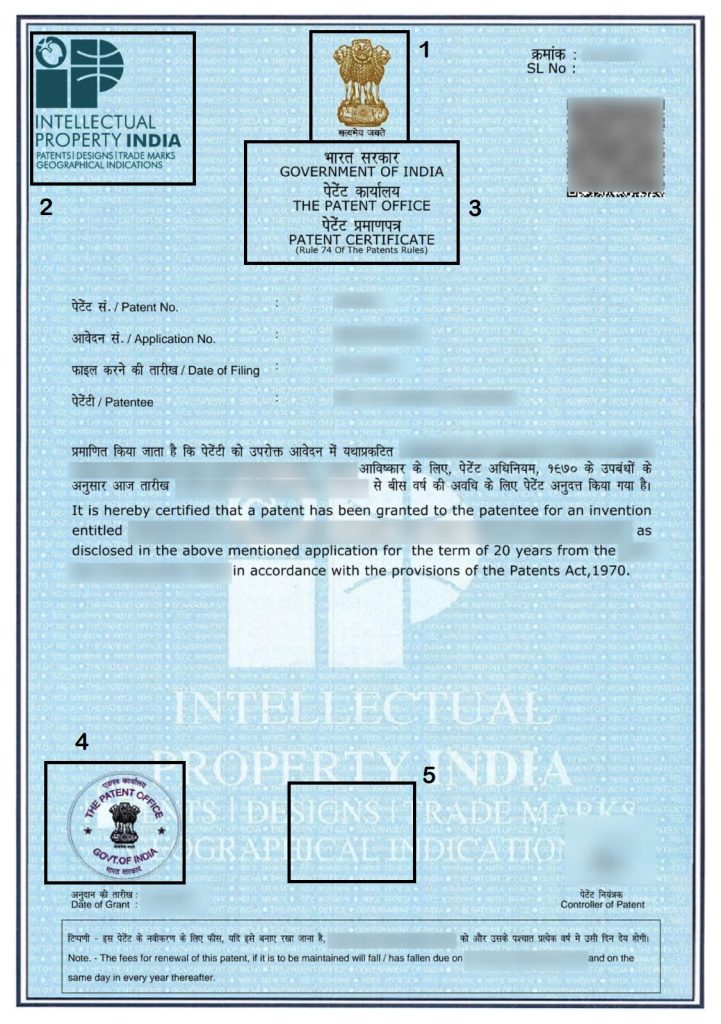
[Old Certificate Background Language]
[New Certificate Background Language]
[Old Certificate Watermark]
[New Certificate Watermark]
ADDRESSING THE RESPECTIVE AMENDMENTS
- With reference to the first difference (See Fig. 1, Box 1), the size of the National Emblem of India has been magnified. The motto of the National Emblem is “Satyamev Jayate” or “Truth Alone Triumphs”
- Another prominent change is the colour of the logo of Intellectual property rights, from green to dark Blue (See Fig. 1, Box 2)
- Next in line is the change in the header alignment. (See Fig. 1, Box 3)
- The next amendment is the removal of stamp of Patent Office. (See Fig. 1, Box 4)
- With reference to the fifth difference (See Fig. 1, Box 5), there is an addition of a seal of the Patent office of India.
- Next comes the insertion of the term “INTELLECTUAL PROPERTY GOVT OF INDIA” in 15 different languages which is not seen in the former certificate. (See Fig. 2, box 6)
- Last but not the least, is the change in the background water mark showing “TRICOLOR OFFICE PROUD INDIA FLAVOUR” (See Fig 3, box 7)
CONLUSION
To sum up, the Modi Government’s efforts towards digital India are reflected due to such developments which is in a way helping the end user and simplifying the process that comes out to be beneficial. Such flexibility which has come out with the E-certificates is in a way outdating the very idea of carrying physical records. Conclusively, the reader will be updated about the specific changes that took place in the aesthetics of the Patent certificate with effect from 1st of June, 2023. Having a look at the changes in toto, they are
- The colour of the certificate
- The size of the National Emblem
- The change in logo of intellectual property from green to Blue
- The alignment of the header
- The exclusion of the patent office stamp
- The insertion of the patent office seal
- The change in the background, which now includes “Intellectual property govt of India”, interestingly in 15 different languages which corresponds to the currency notes
- The water mark change depicting “Tricolor office proud india flavour”
Author: Khushi Pardeshi, 3rd year (B.A.LL.B) student at Maharashtra National Law University, Aurangabad, and Jigyasa Ojha 3rd year(B.A.LL.B) student at Bharati Vidyapeeth, New Law College, Pune, (Maharashtra), in case of any queries please contact/write back to us via email to chhavi@khuranaandkhurana.com or at Khurana & Khurana, Advocates and IP Attorney.
REFERENCES
- https://ipindia.gov.in/index.htm
- https://ipindia.gov.in/history-of-indian-patent-system.htm
- https://depenning.com/





